One in five people in the United States speaks a language other than English at home and 41 percent of these individuals, or 25.1 million people, are considered limited English proficient (LEP). The growing limited English proficient population across the nation is creating an increased demand for language access. This impact couldn’t be any more prevalent than within health care. As we grapple with how to accommodate the increasing needs of LEP, Deaf and hard of hearing patients, it’s important to consider why we need to prioritize patient language access needs and how to do this consistently across a health care facility or health system.
Patient Safety as Priority
It’s not uncommon for health care providers to use any interpreter who is available—even if that means a family member or another staff member who speaks a patient’s language. However, in addition to an increased liability for the health care organization and a potential HIPAA violation, this can also create a challenge in accurately communicating all information to patients. As providers, it is incredibly important to ensure that patients can understand their clinicians, their health challenges, medication needs and discharge instructions.
A study published in Medical Care, the official journal of the medical care sector, recently found that “Convenient Access to Professional Interpreters in the Hospital Decreases Readmission Rates and Estimated Hospital Expenditures for Limited English Proficient (LEP) Patients.” The study discovered that providing easy access to interpreters in the acute-care hospital was associated with decreased 30-day readmission rates for patients with a language barrier. This improvement was lost once interpreters were less accessible. Providing clinicians with immediate access to qualified interpreters, at any time, was a key component to the success of the intervention. Additionally, an effective implementation of access to interpreters in the hospital did, in fact, improve the quality of care for LEP patients.
These results are consistent with one other study conducted in 2012, “Professional language interpretation and inpatient length of stay and readmission rates” that demonstrated using qualified interpreters at admission and/or discharge was associated with decreased readmission rates. This study is the first to demonstrate that a system-wide intervention providing increased access to interpreters throughout the hospital stay both decreased readmission rates and hospital expenses.
It’s the Law
Health care organizations are legally required to provide access in a patient’s preferred language. If your organization receives Medicare, Medicaid or reimbursement from federal health programs, you have a legal obligation to provide language access services to LEP, Deaf or hard of hearing patients. Health care organizations that receive Medicare, Medicaid or other source of federal funds have an obligation to provide oral interpreters and written translated documents.
In fact, failing to provide language access services to LEP patients is a form of national origin discrimination. There is case law going all the way up to the United States Supreme Court (Lau v. Nichols. 1974) that establishes that basic principle. This regulation requires covered entities to take reasonable steps to provide meaningful access to “each individual with limited English proficiency eligible to be served or likely to be encountered.”
Federal law, state law in all 50 states, as well as multiple judicial decisions, refer to the need for health care organizations to provide language access services. Additionally, the major language access provisions of Section 1557 of the ACA require the use of qualified interpreters and significantly restricts the use of untrained family members and friends, minor children and untrained bilingual staff as medical interpreters.
What is the Solution?
It is nearly impossible to have an on-site interpreter, or even a staff interpreter, available for every single language request. Therefore, it’s important to round out a language access program with several modalities across the continuum of care to bridge the language gap between clinicians and their LEP, Deaf and hard of hearing patients.
These modalities can include a mix of on-site interpreters, assessed and trained bilingual staff, over-the-phone interpreters and the addition of written translation services. Combined with the immediacy of video remote interpreting (VRI), this mix provides an effective balance of language options to best serve the needs of patients and providers. The use of VRI can improve the staff’s ability to immediately reach a medically qualified interpreter at any time while remaining compliant with federal and state regulations. This can also prevent care from being disrupted due to canceled or delayed appointments.
A comprehensive language service mix has the potential to improve satisfaction among patients, staff and physicians while reducing the risk of miscommunication with patients and family while remaining compliant with Federal and Joint Commission requirements. An effective language access program can create continuity of care, increase efficiency, improve patient and provider communication and ultimately, patient outcomes.
About the Author:
Chris Richardson began his career at AxessPointe Community Health Centers, Inc. in 2015 as Chief Operations Officer. In 2016, he became Chief Executive Officer. Previously, he served as Director of Oriana House, Inc., the ADM Crisis Center, where he facilitated large-scale collaborations for programs addressing barriers to substance abuse treatment and recovery. Mr. Richardson attended Kent State University where he received both his Bachelor of Arts in Criminal Justice and a Master of Education with a specialization in Rehabilitation Counseling. He is a Licensed Independent Chemical Dependency Counselor with Clinical Supervisory designation, a Licensed Professional Counselor.
AxessPointe Community Health Centers, Inc. is a federally qualified health center (FQHC) serving more than 18,500 patients in 2017 throughout Summit and Portage counties. AxessPointe has five current sites in Northeast Ohio, including three in Akron, one in Kent and one in Barberton. An FQHC is a non-profit corporation that delivers primary medical, dental and preventive health services in medically underserved areas. AxessPointe also provides pharmacy, women’s health and behavioral health services. For more information visit axesspointe.org.


